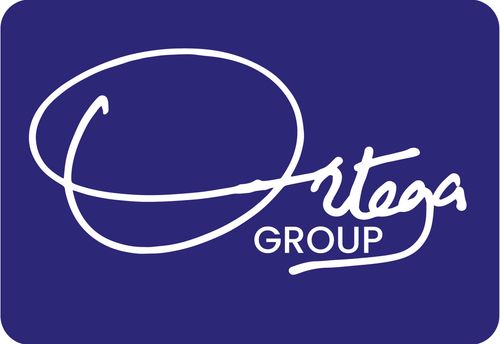In 2019, Masaka Breweries Limited (MBL), a Fast-Moving Consumer Goods company in the Beverage sector welcomed a new Managing Director, Alvin Mukasa. Top on his agenda was to be transformational, in culture, in new contexts, and in establishing new categories. MBL was the market leader in the Ready to Drink (RTD) category despite not producing any of the products locally. It was a huge opportunity to be able to roll out local production in order to fully leverage the gross margin gains from this category. Local production would mean a new blending plant, and ultimately a capital investment of no less than GBP 3 million. MBL would not always own this category, new market entrants kept slicing away a portion of this category of RTD. Among these entrants was Savannah, whose uptake was now threatening MBL’s RTD product line of Smirnoff and Tusker Cider. Only local production would provide the safeguard of this market value and volume share.
Although MBL was the category leader, it had to rely on the sister company in Rwanda, Rwanda Breweries Limited (RBL) for this supply as there was no RTD plant established in Uganda. Even when there was market, sometimes MBL would not be able to make the most of it, as there was always supply constraints. Sometimes, RBL would restrict production in order to satisfy its own local market. MBL would have to find a sustainable solution sooner than later.
“If we can have a plant in 6 months, then we shall be proud of our new ways of work. That will dial strong on our boldness and agility,” Mukasa challenged the Project team. The project team would have to make the business case, one that would have the required payback of less than 3 years, and one that would ensure a plant within the budget range of the business is delivered and commissioned ready to run.
NV Hari, the Engineering Project Manager for African Breweries Limited (ABL) was tasked with figuring out the quickest solution. He would then pass on this same challenge to a young and ambitious in-market project manager, Ian Ortega. The CAPEX Team (as they famously preferred to be called) then got to work. They knew it would be an uphill task, but they never saw the hill grow into a mountain.
As the process went, the users would always write a User Requirement Specification. In here, they would detail the key project requirements, define key performance indicators (KPIs) and consider the pros and cons of different options. ‘Do Nothing’ at this point was not an option. Once the URS was signed off by the key stakeholders, this would then be submitted to the CAPEX TEAM to proceed with the Capital Business Paper (CBP). With the CBP, approvals required that projects would pay back in less than 3 years as per their submitted financials.
As part of the CBP process, the project team was required to establish working budgets. It’s this budget that would inform the financial modelling. For the budget, the team required some conceptual layouts, and some standards to base their preliminary design requirements. Hari would then task a process engineer from South Africa to lead the process engineering design elements. The process engineer was Lindsay Hepker. He’d worked on similar Ready to Drink plants in South Africa and thus inspired hope in quickly pooling off the works for this project. Unknown to the team at this point, there was no one-size fits it all plant design. Every market had found a way to blend their own Smirnoff products. South Africa had its approach, and so did RBL.
“We have a solution, we can install and commission a plant through a Turnkey approach at no less than GBP 3.5m, the pay back looks just right at 2.8 years. We can proceed to submit the CBP for approval,” Ian and Hari confirmed to the project site steering committee. Mukasa was in high spirits and reckoned the team to make submissions as good as yesterday. From now on, it would be breakneck speed. The biggest hurdle of cost was out of the way.
Project fully approved; budget loaded on the Internal Order. It was now time to appoint a supplier. At the design conceptualization, MBL had chosen a procurement strategy that would focus on second Tier Suppliers. The First Tier Suppliers such as Krones, and other European suppliers would not be approached for a solution. Only Second Tier such as Hypro (India), Lehui (India) and High Tech, GEA (both from South Africa. Lindsay had now proceeded to a detailed scope engineering and with this, the team was ready to proceed to procurement. The race was between GEA and High Tech as only these were able to beat the tight timelines for submission of bids. Nothing less than a Turn-key proposal would be accepted.
Upon evaluation, High Tech offered an extra advantage to MBL. It would also take on the Civil aspect of the project. This, they must say, was the ultimate start of the problems that would face MBL. Upon being awarded the project, High Tech and the Project team now got down to the validation requirements around Design Qualifications. It’s at this point that more members of the Coors MillerGlobal Liquid Team were brought into the picture. Most came from different sites such as Santa Victoria in Italy. At Design Phase, there was a new variance from the scope that had been shared to the vendors, to all the new requirements that were cropping up. “We can’t mix both salts and acids in same tank,” Luis Ortega from the Coors MillerGlobal Liquid Team told the team. “There must be an 8-hour rest after adding the clouding agent.” With every meeting, it seems like what the vendor had quoted for would now be different from the design that would be approved for manufacture. No one had imagined that Coors Millerhad never codified its Ready to Drink production standard. There was a Coors MillerWay of Brewing, and the process was always clear around requirements for Beer. But now for RTDs, nothing of that sort existed. It seemed like everything; every standard had now just emerged with this project.
Once the Design Qualification was completed and signed off, the High-Tech Project Manager sent an email to the Capex Team. “The changes from the Design qualification and HAZOP had been significant, we would like to have a change order approval decision.” It was now back to the CAPEX team to face the ABL executive. The Variation would imply that the project initially budgeted for at GBP 3.5million had now grown to GBP 5.1 million.
“We may have to put the project on hold,” Hari discussed with his team. Unfortunately, in a bid to fast-track the project, elements of agile management had been used. For the long lead items such as Tanks, approval had already been given to proceed to manufacture. The Design process had taken more than 3 months, and within the first month, the Vendor had been directed to proceed with tank manufacturing since the major elements of the tanks had already been agreed. If the project was to be placed on hold, then this component of the tanks would not be reclaimed, and the vendor would be compensated for the services component attached to the tanks. The Tanks were also the major cost driver in this Bill of Quantities. It was also not clear how a budget uplift would still fit within the payback requirements of the plant. At 3.5million, pay back was already at 2.8 years. It was evident, GBP 5 million would imply a payback in the range of 3.5 to 4 years. Was the business ready to take this risk? Was there cash flow to support this transition? High Tech had also highlighted to MBL that they could reduce the capacity of the plant and maintain to stay within budget. The original capacity had been established at 300Kilohectolitres while the revised capacity would be 100Kilohectolitres. The challenge was in payoffs. If the economy continued in high demand, MBL would maximize all this capacity and return a revenue. Current cost per hectolitre was currently at GBP 1000. In medium demand, the plant would only be able to utilize 150 kilohectolitres of the installed capacity. In low demand, there would be zero hectolitres of demand thus zero revenue.
On the other hand, halting the project also implied that the business would be rescinding on its earlier commitments to the Uganda Government. In order to encourage local manufacturers, the government had given waivers based on the Local production component. Would the business be able to alienate its stakeholder? Would it be willing to lose out on the Gross Margin uplift from local production? It also seemed now that the longer the business took to make this decision, the higher the chances that project would not fit in the committed timelines. Savannah had just launched an even bigger campaign to take stronger hold of the market. COVID-19 had also destroyed the supply chain and MBL was still struggling to get its monthly shipments of RTD from RBL. It was now upon Alvin Mukasa to make that decision. He could halt the project and live with the consequences for the rest of the tenure. After all, what was the guarantee that he hadn’t started on the slippery slope of sunk costs? What if down the road, the Vendor would still return with more variations? What was the limit? Recovery from the COVID-19 disruptions was still long way out of the picture. The earlier one called their losses, the better. But he could also take a bet on the future. A future where MBL had the flexibility to innovate within this RTD category that was now growing into a Ready to Serve (RTS) category. One thing was clear, MBL was not yet Ready to Drink until a decision was made, and time was ticking away. And although Alvin would make this decision at site level, at the end of the day, he also had to explain his case to the Group leadership. They too, would have to buy into the decision and grant their approval for this new budget range. A lot could happen in 3 months, a lot indeed, had happened, and more would unfold depending on the final decision.
MBL’s Capital Approval Guidelines
- Above 4.9 million: MBL Supply Chain Director, MBL Finance Director, MBL Managing Director, ABL Group Supply Chain Director, ABL Group Finance Director, ABL Managing Director
- Below 4.9 million: MBL Supply Chain Director, MBL Finance Director, MBL Managing Director, ABL Group Supply Chain Director
Important Economy Facts:
Revenue Per Hectolitre of Demand= GBP 1000
IKHL= 1 KiloHectolitre

